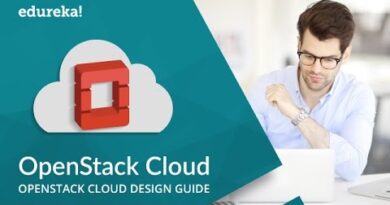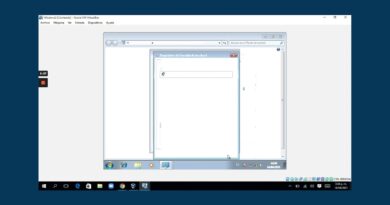Identify interface and cable issues collisions, errors, mismatch duplex, and/or speed in Hindi
#ccna #interface #cable issues #Indianciscogroup
Lots of times we are troubleshooting cisco switches connectivity and performance. Under the stress of the moment, we forget some essential IOS commands that can save us time and effort.
The most common IOS command to give us a clear picture of the switch interface is the show interface or show interface description command. It gives us a lot of information about the interface status, the working configuration, protocols, errors, collisions, etc.
#ccna #interface #CommunicationModes
#LearnCoding
#SimplexMode
#HalfDuplex
#FullDuplex
#Networking
#TransmissionMode
#DataTransmissionMode
#typesofdatatransmission
#modesofcommunication
#NetworkDevice #cable #issues #CommunicationModes #LearnCoding #SimplexMode
#ccna 200-301 full course in hindi #ccna New full course in hindi #ccna200-301 #basicnetworking #introductiontonetworking #networkingforbeginners
Cisco CCNA Course
Cisco CCNA 200-301
CCNA 200-301 Course
CCNA 200-301 Full Course
CCNA 200-301 Study Guide
CCNA 200-301 Tutorials
CCNA 200-301 Training
ccna course for beginners 2020
ccna full course
ccna full course in Hindi
ccna 200-301 full course in Hindi
ccna 200-301
200-301
ccna 200-301 in Hindi
ccna 200-301 full course
ccna tutorials
ccna tutorials in Hindi
ccna training
ccna training in Hindi
ccna 200-301 tutorials
ccna 200-301 tutorials in Hindi
CCNA Exam v1.0 (200-301)
1.1 Explain the role and function of network components, Routers, L2 and L3 switches, Next-generation firewalls and IPS, Access points, Controllers (Cisco DNA Center and WLC), Endpoints, Servers
1.2 Describe characteristics of network topology architectures,2 tier, 3 tier, Spine-leaf, WAN, Small office/home office (SOHO), On-premises and cloud
1.3 Compare physical interface and cabling types, Single-mode fiber, multimode fiber, copper, Connections (Ethernet shared media and point-to-point),Concepts of PoE
1.4 Identify interface and cable issues (collisions, errors, mismatch duplex, and/or speed)
1.6 Configure and verify IPv4 addressing and subnetting
1.7 Describe the need for private IPv4 addressing
1.8 Configure and verify IPv6 addressing and prefix
1.9 Compare IPv6 address types, Global unicast, Unique local, Link local, Anycast, Multicast, Modified EUI 64.
1.10 Verify IP parameters for Client OS (Windows, Mac OS, Linux)
1.11 Describe wireless principles, Nonoverlapping Wi-Fi channels, SSID, RF, Encryption
1.12 Explain virtualization fundamentals (virtual machines)
1.13 Describe switching concepts, MAC learning and aging, Frame switching, Frame flooding, MAC address table
2.0 Network Access
2.1 Configure and verify VLANs (normal range) spanning multiple switches, Access ports (data and voice), Default VLAN, Connectivity.
2.2 Configure and verify interswitch connectivity, Trunk ports, 802.1Q, Native VLAN.
2.3 Configure and verify Layer 2 discovery protocols (Cisco Discovery Protocol and LLDP)
2.4 Configure and verify (Layer 2/Layer 3) EtherChannel (LACP)
2.5 Describe the need for and basic operations of Rapid PVST+ Spanning Tree Protocol and identify basic operations, Root port, root bridge (primary/secondary), and other port names, Port states (forwarding/blocking), PortFast benefits
2.6 Compare Cisco Wireless Architectures and AP modes
2.7 Describe physical infrastructure connections of WLAN components (AP, WLC, access/trunk ports, and LAG)
2.8 Describe AP and WLC management access connections (Telnet, SSH, HTTP, HTTPS, console, and TACACS+/RADIUS)
2.9 Configure the components of a wireless LAN access for client connectivity using GUI only such as WLAN creation, security settings, QoS profiles, and advanced WLAN settings
3.0 IP Connectivity
3.1 Interpret the components of routing table
3.1.a Routing protocol code , Prefix, Network mask, Next hop, Administrative distance, Metric, Gateway of last resort
3.2 Determine how a router makes a forwarding decision by default, Longest match, Administrative distance, Routing protocol metric
3.3 Configure and verify IPv4 and IPv6 static routing, Default route, Network route, Host route, Floating static
3.4 Configure and verify single area OSPFv2, Neighbor adjacencies, Point-to-point, Broadcast (DR/BDR selection), Router ID
4.0 IP Services
4.1 Configure and verify inside source NAT using static and pools
4.2 Configure and verify NTP operating in a client and server mode
4.3 Explain the role of DHCP and DNS within the network
4.4 Explain the function of SNMP in network operations
4.5 Describe the use of syslog features including facilities and levels
4.6 Configure and verify DHCP client and relay
4.7 Explain the forwarding per-hop behavior (PHB) for QoS
4.8 Configure network devices for remote access using SSH
4.9 Describe the capabilities and function of TFTP/FTP in the network
by Indian Cisco Group
windows server dns forwarder



